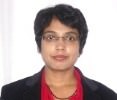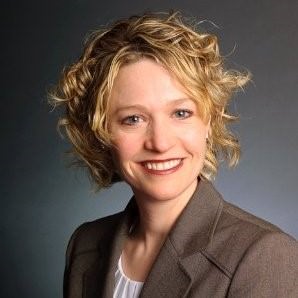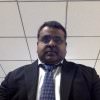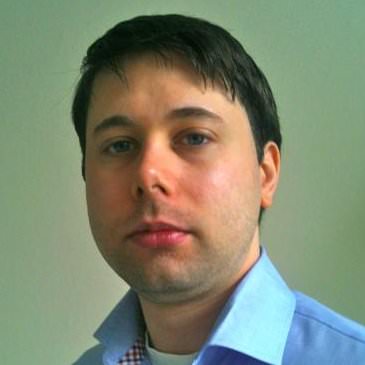Iasa’s Contributor of the Month & Member Spotlight
The Contributor of the Month & Member Spotlight are part of a new initiative for Iasa that will highlight specific members each month that have gone above and beyond to provide valuable contribution to their global community.
To find out more, please see our Content Contribution page for further information.
Contributors of the Month
 MAYA MORE
MAYA MORE
Senior SME, Architecture and Technology
I joined Iasa Global in March 2014 as an individual full time member, so it is a year now. What do you do, and how long have you been doing it? I am senior architect with a large private oil and gas major in India. I took up this position six months ago and am part of a team that is setting up the Enterprise Architecture function for the group. Prior to this role, I spent nineteen years with two major Indian IT services and consulting firms travelling to different countries for client projects. In 2004, I moved from handling software design and project management to a full time solutions architect career track. I now specialize in business technology strategy, application architecture and information architecture, and work in business transformation initiatives and reference architecture development.
Q: Why did you decide to contribute to Iasa and what does your involvement look like?
I initially signed up for IASA membership in order to attend architect training and pursue the CITA certification. I found on the Iasa Global website that there are multiple platforms offered to members to contribute. I started initially with blogs, but seeing the volunteer calls for the guidebook, moved to contributing to capabilities for the Business Technology Strategy pillar. My initial submissions brought me positive feedback from IASA’S BOE Committee chair, Miriam Grace. I went on to take up more capabilities areas as we were looking for authors to complete the guidebook. On an average I spent 3-4 few hours every weekend and completed five different capabilities. I am currently working on the training modules to accompany the capabilities guidebook which is likely to take up some more effort. I also continue to sign up for trainings and certifications. I completed my CITA-F certification last July and plan to appear for CITA-A this fall.
Q: How has your involvement with contributing in Iasa Global benefited you?
Contributing to Iasa and being a member has benefited me in many different ways. I get to enhance my knowledge looking up past experiences, researching and validating the information I eventually condense for the capabilities. Getting ISA BOE’s direct input and feedback from peers is great validation of my experience. Working alongside peer architects from premier organizations worldwide, has also significantly expanded my professional network. And of course, I have made new friends across the globe as well.
Q: Why is it important for other organizations or individuals to join and contribute to Iasa Global?
If you look at the growing complexity and inter-connectedness of systems today, against the backdrop of security threats, architecture specialization is becoming a necessity for organizations across the world. Yet, I know from experience of the wide disparity and confusion on the architect’s role and sometimes the maturity of architecture itself. Iasa recognizes architecture as a profession requiring a systematic body of skills and has a well-defined body of knowledge and career ladder defined by the collective efforts of practicing architects over the past decade. Second, Iasa recognizes the role of architects as a bridge between business and IT and the ITABoK equips architects with the tools and knowledge that are requisite to that role. As a vendor, industry or framework neutral body, it is a great peer platform for career architects. Contributing will help grow and consolidate a shared global body of knowledge that can be institutionalized across industries, similar to project management and quality practices.
Q: What are your hobbies?
I like to read as well as write in my spare time. I also like to cook and experiment with new cuisines and recipes.
Q: What book are you currently reading?
A lot of technical books are taking up my reading time at the moment, so for leisure, I am re-visiting some of my old favorites – Jerome K Jerome’s Three Men in a Boat and Three Men on the Bummel. I am also reading Poems of William Blake.
Q:What social networks do you belong to?
I use Facebook to stay connected with friends, family and follow personal interest groups. I use LinkedIn for professional networking but prefer memberships with professional associations like Iasa and IEEE for networking and to follow developments in architecture and technology. I also contribute to online travel and book communities.
Q: Any last thoughts?
I would like to end with sharing two quotes I have heard from fellow architects at work and that highlight the human dynamics aspect of an architect’s role. First is, “The most important tool for an architect is a box of chocolates”. And the second, “Architects should be good at what they do. But great architecture is everyone’s responsibility”.
Phil Wheat
Founder, Drone Labs,LLC.
I’ve been presenting and sponsoring IASA for over 8 years now, and look forward to many more going forward.
Q. What do you do, and how long have you been doing it?
I create solutions. Some of those solutions are in code, some are in hardware, some are with people. But mostly with code and hardware.
Q: Why did you decide to contribute to Iasa and what does your involvement look like?
I’ve been lucky enough to be able to support with sponsorship, locations, and speaking engagements. It’s been a great time working with the various organizational and community members during this time.
Q: How has your involvement with contributing in Iasa Global benefited you?
Working with IASA has been great in spotlighting projects and processes that I’ve worked on that needed to be socialized and emulated. It has also been a great way to keep in contact with very talented people and their works.
Q: Why is it important for other organizations or individuals to join and contribute to Iasa Global?
While there are quite a few organizations in the industry that can help technologists with the “How”’s of their careers, IASA is where the “Why”’s are reviewed. And if you’re not looking at the “Why” then you’re very likely to not pick the best “How.”
Q: What are your hobbies?
I build things. Robots, Aircraft, Buildings, etc. I’m currently on a big push around all things Radio.
Q: What book are you currently reading?
“Attack on Pearl Harbor: Strategy, Combat, Myths, Deceptions “
Q. What social networks do you belong to?
I belong to pretty much all of them, but I generally just pay attention to Facebook for personal items and LinkedIn for professional ones.
Q: Any last thoughts?
Working with IASA has been a great experience – I do hope more people can come out to our events and participate in the conversations and content we’re doing.
 Phil Helm
Phil Helm
Principal Software Engineer, Metlife
President, Iasa Raleigh Chapter
Q: What was your motivation to start the chapter?
I have a passion for quality and knowledge, and Iasa fulfills both. I also saw a shortage of technology leadership and collaboration in the Triangle. There is an opportunity to do something very special in this area.
Q: What is the vision of the chapter for the IT architecture profession in your local area?
To grow the profession and the individual architect. The Triangle is a rapidly growing technology hub and will need quality architects to fill those gaps. Both the practitioner and the student will need a strong architecture skillset, and this chapter intends to help develop it.
Q: What excites you/your members about Iasa and the chapter opportunities?
What are you and your member’s expectations?
I think exchanging ideas and best practices with the community in an agnostic way is very exciting. It is one thing to read a book about architecture; it is quite another to hear a practitioner describe what works and what does not in the real world.
I would expect a member to learn something new and valuable on every single interaction with the chapter. Events should be engaging, though provoking, and most of all create a higher standard for architecture.
Q: What are the plans for the chapter in terms of activities (meetings, training, programs etc.)
If you have specifics please include location, date, agenda etc.
We have some tentative plans to hold a Triangle area kickoff meeting in August, a “Day in the Life” architecture panel at UNC in October, as well as several use case workshops through the end of 2015 based on the five pillars of ITABoK.
Q: What else do you want to share with us for the news article?
We want this chapter to serve the architects and the engineers. Anything we do as a chapter leadership team needs to reflect the needs and wants of our members. We are open to any and all suggestions on how to make this chapter successful.
Brian Loomis
Enterprise Architect, Microsoft Corporation
Enterprise Architect, Microsoft Corporation
Q: How long have you been involved with Iasa Global?
Since the dinosaurs first saw the need to build software, and suffered the first unfortunate project cancellation. Seriously, for 5 years, now, as a member/practitioner, instructor, and collaborator.
- What do you do, and how long have you been doing it?
I have been in Microsoft’s customer facing Enterprise Strategy practice for 4 years and prior to that in consulting, management, and software development lead positions.
Q: Why did you decide to contribute to IASA and what does your involvement look like?
Initially, I saw IASA as one of the premier certifications to help in my professional advancement. Then I started working with the IASA membership and Board of Education on a new version of the business technology strategy course. I currently help out with teaching EA courses and collaborating on the new ITABOK.
Q: How has your involvement with contributing in Iasa Global benefited you?
Probably the single best reason to have joined IASA, is the networking and collaboration with the members worldwide. Through the courses mostly, I have found many professional architects who have helped my own practice of architecture. In looking through my contacts, I have friends from Warsaw to Guangzhou to Seattle to Vietnam. The perspectives of these peers helps me recognize and respond to new challenges in more mature ways than I could without their help.
Q: Why is it important for other organizations or individuals to join and contribute to Iasa Global?
The brand of IASA has grown immensely in the last few years and has really helped set a standard for what architecture can be – beyond the personal practices of certain individuals and the opinions of consultants, IASA has helped define what the state of the practice is across companies and identified future growth. For my company, Microsoft, this is valuable because it helps us understand – both from a product delivery perspective and a consulting approach – what our customers see and how they define value.
Q: What are your hobbies?
I dabble a bit in classical guitar, and find myself camping with the Boy Scouts or watching my daughter’s gymnastics more often than not. I would also say that a good red wine can help gain perspective on intractable problems.
Q: What book are you currently reading?
The SAS outdoors survival manual, and professionally some Azure materials.
- What social networks do you belong to?
Facebook (though my wife tends to acknowledge birthday greetings, I’m not so much a regular) and an internal tool called Delve.
Q: Any last thoughts?
I do enjoy my interactions with the membership of IASA and would just like to say thank you for all of the great conversations and work we’ve done together over the years. Our organization is just that – ours, to keep making better.
Whynde Kuehn
S2E Consulting Inc. and Metanoia Global Inc.
Bhagvan Kommadi
Cofounder, Architectcorner
Wayne Anderson
Director, Global Client Information Security Lead at Avanade
Avanade has clients all over the world that need to solve difficult problems, whether digital marketing, connecting the workforce, capturing cloud economics, deploying new line of business systems. Within the Chief Information Security Officer (CISO) office, I lead a team which focuses on ensuring that through people, process, and technology, Avanade’s investments in protecting our clients results with a high level of trust for the industry and market conditions they are experiencing.
Q. Please share your career milestones and/or cool projects you are working on.
Over more than 11 years here, there have been so many interesting projects and roles! A few key experiences stand out. In July 2014, as an Infrastructure Managed Services Solution Architect, I took a timeout from connecting with clients and helping them adjust the way they deliver services globally to sit the Certified IT Architect-Professional board. It remains one of the most challenging (and rewarding) crucible experiences I have prepared for. Over the last 18 months, I have really shifted gears to focus on re-investing the experiences of cloud transition and global footprint clients into making sure Avanade can help them answer these organizational questions on security and compliance.
Every day, we deliver services across the globe. Small teams. Large teams. 4 month engagements. 5 year long term managed services. And in every single one of these engagements, we want to make sure our clients understand how seriously we take the responsibility of working for them. We deliver, with trust and integrity for one client, and then scale that to be able to do that with 30,000 consultants across the globe. It’s an interesting role, the enterprise architecture of getting in front of those changes is renewing every day.
Q: How long have you been involved with Iasa Global?
As far back as 2010, I supported Avanade candidates in preparing for and attempting Microsoft’s Certified Architect program, a predecessor of some elements of the IASA program. While I was not yet in a role myself with value in attempting the review board, seeing the project these senior professionals tackled was almost its own challenge. Get in front of competent, passionate, deep professionals who ware experts in the space, and explain and defend approaches from your architectural experience.
In 2013, I became more interested in sharing and learning from other architects as I worked with designing system transformations for clients across North America. In one day, on the LinkedIn community, would see audit experiences from an architect at Fidelity contributing, and cloud readiness strategies from an aerospace company, and then I could chime in with a slight difference in view on how some way of doing project planning could work. It’s been a great source for pushing myself as an architect to find other ways of doing things.
Q: Why did you decide to contribute to Iasa and what does your involvement look like?
There are vendor organizations which focus on a specific framework, or a technology stack, or what a particular manufacturer’s view of how to setup software should be. Finding a model for how business expertise, and design, and communication, and people development, and technical expertise all come together was unique. This was an organization that not only could I contribute by thinking virtually on expert topics, but could also get others’ thoughts and investments in the way that the broader business context contributes to questions like: does this organization need a basic taxonomy, or can this project sustain a larger and more comprehensive framework?
IASA’s LinkedIn community, local chapter meeting presentations, and musing in the certified community are all some of my favorite ways of being part of the conversation.
Q: How has your involvement with contributing in Iasa Global benefited you?
One of the truths in architecture is that you can’t be the best at everything. As strong as I may be in thinking about infrastructure security, maybe I need to think about a problem in industry. As strong as I may be in some business concept, maybe I need to develop a human resources contribution. We all have those balances. At IASA, someone has the opposite strength. Someone has the opposite point of view. I want to unlearn the things that are broken and always challenge myself to find the ways that work better and more efficiently. My best value to the next client, the next security question, the executives at Avanade, is by being the person that is constantly offering more in the areas they (and I) don’t even realize we need tomorrow.
Q: Why is it important for other organizations or individuals to join and contribute to Iasa Global?
Whatever you do, you know things that I don’t. That there are other people who don’t know or look at problems how you do. If there is something I can do or think about or challenge you on, great. But I need that from you, too. IASA needs that from you.
Jump in.
Contribute what you know today.
Learn some of the key bits for the architect you want to be tomorrow.
Q: What is your vision for the IT architecture profession?
Drop the “IT”, you are an architect that exists within a business context. Yes, we come at challenges with a depth in our information technology specialization. I have experiences in security and infrastructure, including experiences from the early days of cloud. The way you are more valuable in the face of globalization and in the face of cloud is to know better than anyone else how your business uses technology to make results happen.
Someone else can come in and can tell people how to do widgets. Tomorrow’s architects are people who can plug and play parts from multiple cloud providers, who can find and solve gaps in hybrid environments, and explain the business and people value of making that change.
Q: Please list your publication and any other volunteer activities you have been involved with.
This November, I am looking forward to presenting at the O’Reilly security conference in Amsterdam. My session will be November 11, a great example of becoming business architects: how do we live in a compliance world and simplify the global complexity of obligations?
Q: Any advice for other architects/next generation of architects?
Start with what you know. Be passionate about being better. Be humble about knowing you are only the expert on some things and the person across the table / on the other end of the phone / in your email is smarter than you somewhere, so treat them with respect. Learn from them. Finally, never lose the perspective that the most valuable thing you can do for a company, is whatever is most valuable to them. Sometimes that’s not always the thing that is most interesting or attractive for us. By getting through that hard thing, or that drudgery thing, you are part of tough projects that are going to be close to the heart of management teams. Your architect title or certification or role change is not the end of “doing work”, it’s the start of a long journey full of new things to learn that should challenge you to simply work in different ways.
Andreas Wuest
Senior System Architect at TomTom
At present I am a senior system architect in TomTom’s automotive line of business, responsible for the creation of customer-specific solutions that integrate our on-board navigation engine, navigation HMIs, off-board traffic & travel information services, content (e.g. digital maps) delivery, and the customer’s in-dash computing platforms. Next to that, I am also involved in advancing TomTom’s reference automotive architecture, and consult on various access management initiatives in TomTom.
I have been an architect in various roles since 2009, coming from a software engineering background, working for different lines of businesses over time.
Q. Please share your career milestones and/or cool projects you are working on.
As an architect I was involved in the design and delivery of multiple generations of TomTom’s ecommerce, navigation device management and content delivery systems in TomTom’s consumer line of business, as well as a new access management platform for TomTom’s automotive line of business. I have also successfully delivered many customer-specific automotive solutions.
Q: How long have you been involved with Iasa Global?
I joined the Dutch chapter in 2011, and in 2014 became a chapter leader for that chapter.
Q: Why did you decide to contribute to Iasa and what does your involvement look like?
Advancing the education, capabilities and recognition of the IT architecture profession is close to my heart, which is also Iasa Global’s mission. When I was asked by the previous Dutch Iasa chapter leadership to join their leadership team, I saw this as a great opportunity to advance this mission.
As chapter leader I manage and organize chapter activities together with our other chapter leaders, ranging from defining our vision and mission, to our yearly business plans, to our monthly eRoundtables (virtual roundtable discussions, following the topic of the monthly eSummits organized by Iasa Global). On Iasa Global-level, I contribute to various initiatives around chapter management.
Q: How has your involvement with contributing in Iasa Global benefited you?
My involvement enabled me to have an impact on our profession that would be difficult to achieve otherwise, as well as meet many high-powered IT architects around the globe, learning and practicing new skills that I can immediately apply in my day job.
Q: Why is it important for other organizations or individuals to join and contribute to Iasa Global?
Iasa Global provides unique opportunities to grow as architects, shape the profession and its perception, and meet fellow architects to learn from them. For organizations, Iasa Global can deliver an offering tailored to your organization.
Q. What is your vision for the IT architecture profession?
A profession that is high in impact through providing strategic value, a profession that agrees on what it is that we do as a profession, and a profession that has a readily accessible body of knowledge that explains how to do what we do, so that anyone can become proficient and start delivering value, in a repeatable fashion.
Q. What excites about Iasa and chapter opportunities?
The chance to make a difference to our profession that is otherwise hard to come by, the chance to meet and get to know many of the top performers in our profession, and Iasa’s well-thought out approach to educating architects.
Q. Any advice for other architects/next generation of architects?
Understanding technology is important, but if you cannot understand or influence the organization to apply the right technology in the right way, then you don’t provide the value IT architects must be providing. This is why at Iasa we focus on the architect instead of on architecture.
If you are coming from a software engineering background like I did, then you probably are already quite proficient with understanding technology and creating solutions from those technologies. Now go and study human dynamics skills (especially how to influence up, down and across) in order to ensure that the technology is applied in the right way (and sometimes also the right technology), and, if you haven’t done so yet, go and understand the business you are in, in order to apply the right technology. Value of your solution is only realized if it provides value to the business – the wrong technology applied correctly or the right technology applied incorrectly will not allow you to realize the full value potential of your solution.
As IT architects, we must have a broad field of view, yet understand those details that may hinder our solutions. Make sure you understand those details, but don’t get lost in them. Also, remember that it is not necessarily yourself that has to dive into all the details, don’t forget to delegate!
Growth happens when you put yourself outside your comfort zone. So go and take opportunities in your day job but also opportunities like e.g. contributing to Iasa to go outside your comfort zone, and learn new skills by doing that.
Q: Any last thoughts?
Remember that any solution consists of people, processes and technology. If you only focus on the technology piece, you are missing two-thirds of the story.
If you are based in the Netherlands and would like to contribute to the Dutch chapter, or be otherwise involved in chapter activities, feel free to contact us at netherlands@iasahome.org.

 Daniel Akenine
Daniel Akenine











